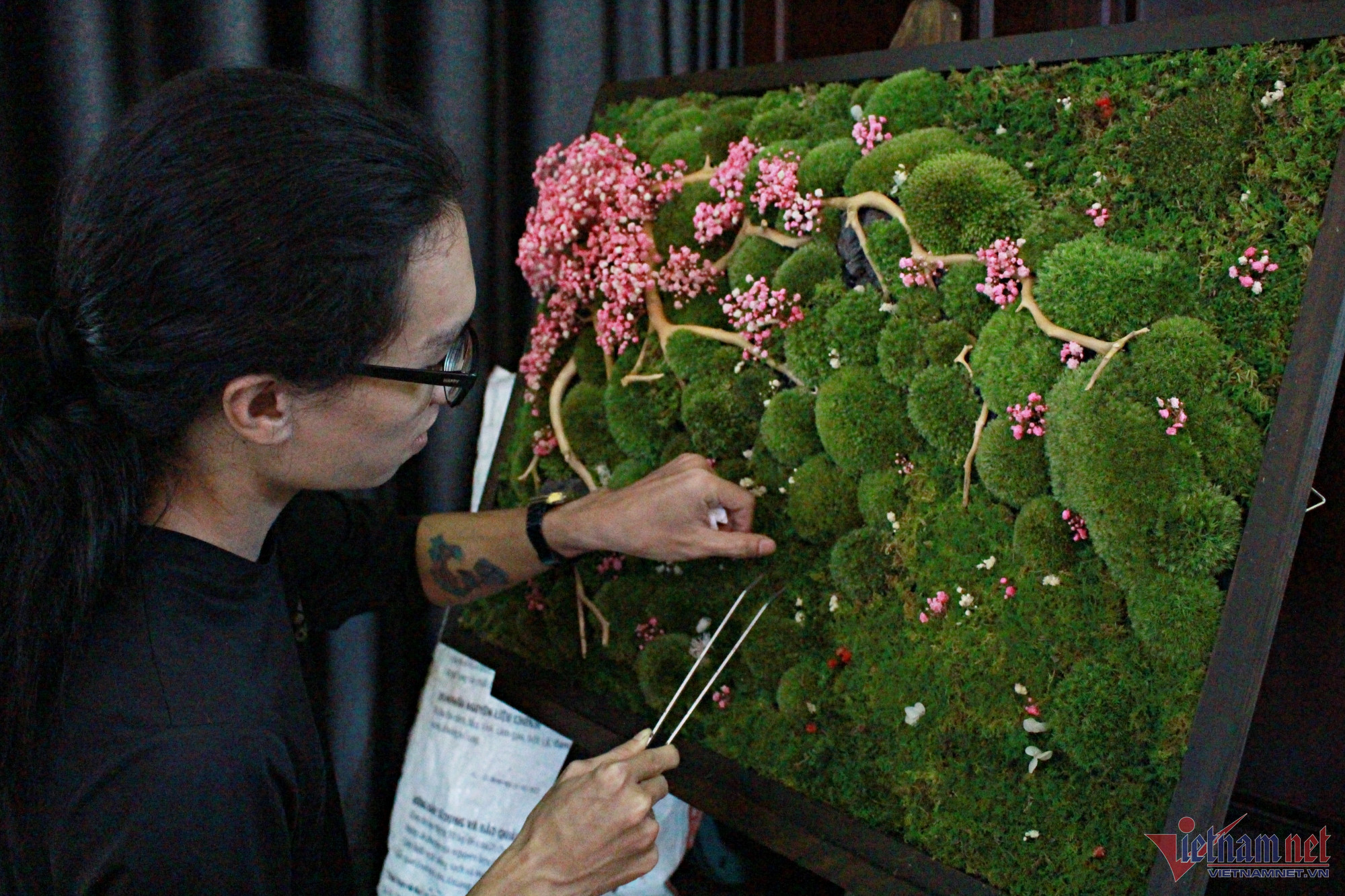
At the table in the middle of the room, the young man can be seen meticulously fixing patches of moss on a large-sized 2D painting.
Hoang calls this moss painting, a new form of art imported to Vietnam recently.
The young man once worked as a cook for seven years at restaurants and hotels in Nha Trang City. As the Covid-19 pandemic broke out, he had to quit his job and stay at home to relax.
Later, he found joy in aquatic plants and nurtured a hobby of developing aquatic creatures, terraniums and paludariums. With a hobby of owning semi-terraniums, Hoang step by step approached wild mosses.
“I like mosses. Unlike trees, mosses grow very slowly. When putting the plants into terraniums and paludariums, they stay intact as initially fixed,” he said.
Hoang felt a special passion for this type of art after discovering moss painting.
The prerequisite technique of this art form is forcing the wild moss into a dormant state.
This is difficult work. Hoang learned the technique with foreign experts by attending an online training course. After mastering the basic knowledge, Hoang bought fresh moss and began his experiments.
The fresh moss collected from forests and streams were cleaned. He removed dirt, trash, waterlogged and rotten leaves, and then dried the moss in the wind to dehydrate the plants.
When the moss reached a certain level of dryness, Hoang used the technique and formula he had studied to put them into a dormant status.
“Hibernating mosses means keeping the moss intact and preventing it from dying and decomposing. This is a very important stage. If this cannot be done properly, the hibernation process will fail and the moss will die,” he explained.
“When mosses die, mold will appear, thus damaging paintings,” he said.
After successfully forcing moss to hibernate, Hoang dyes the moss to recover their initial color. This is also a difficult work which can only be done by experienced people. In many cases, the moss does not have the colors the owners want, or they even become rotten.
Art that brings money, peace
All the stages of the process of making paintings, from hibernating moss to drying and killing mold, are implemented by Hoang with chemicals that Hoang says are not toxic.
After successfully treating the moss, Hoang begins creating pictures with the themes he wants. He sketches the painting and then sticks parts of the moss on the painting.
The work seems to be simple, but in fact it requires creativity and high aesthetic ability. He uses processed moss and other accessories such as driftwood, rocks, sand, gravel, animal bone specimens and models.
By doing this, he can create a miniature scene of nature into a 2D harmonious and vivid moss painting. These could be scenes of a riverbank, peaceful beach, vast green steppe or a corner of primeval forest.
It takes Nhat Hoang one or two weeks to complete a painting. His moss paintings are priced from hundreds of thousands of dong to tens of millions of dong. His original paintings are favored by clients.
The job helps the young man earn tens of millions of dong each month. However, more importantly, Hoang said, the art helps him find joy and escape pressure in life.
“This job makes me feel immersed in nature. Dedicating all my thoughts and emotions to creating paintings makes me feel at peace," he said.
Ha Nguyen